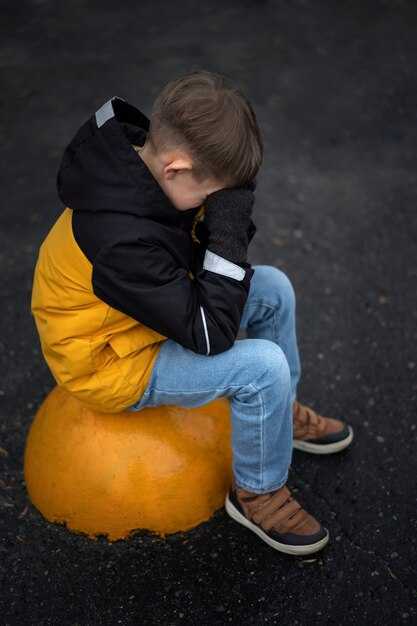I will never forget the day I finally heard a name for the collection of odd emotions, behaviors, and repeating mistakes that I couldn’t seem to stop. The label was complex post-traumatic stress disorder — the form that grows out of chronic, severe stress, most often beginning in childhood, though it can also develop in adulthood. What mattered most to me were the wounds from my childhood and how everything shifted the moment I learned the word that describes the core pattern of symptoms for this kind of trauma: nervous-system dysregulation. For most of my life I lived in a state of dysregulation. I thought I was uniquely prone to confusion, numbness, roller-coaster intensity, and that I would always be clumsy, drop things, and stumble through life. When I learned about complex PTSD and about dysregulation, and then learned ways to re-regulate my nervous system, the change was enormous — I felt steadier and believed the worst was behind me. But like many people who endured childhood trauma, I also carried long-standing self-defeating habits. Once I recognized them, I realized I had been sustaining the pain of my trauma through behaviors that consistently pulled me out of regulation and back into chaos. Even as I relearned how to calm my nervous system, I kept doing things that sabotaged that new balance. These are the self-defeating behaviors I want to describe so you can see whether any of them apply to you. When you are dysregulated, those behaviors light up — they aren’t as active when you’re regulated. Most people carry some of them, but being dysregulated makes them harder to manage: they seep through and snowball. I had to learn not only how to re-regulate, but also how to face honestly the ways I was sabotaging myself. As painful as my childhood was, I realized I was keeping those wounds alive by repeating self-harming patterns. Some of these behaviors are small; others are huge and can ruin your life. They almost always begin as innocent attempts to escape pain: any self-defeating behavior is an effort to get away from hurt. But if you keep leaning on the same behavior to avoid pain, it usually makes the pain worse, and if you don’t find a way to change it, it will create more problems and prolong the trauma in ways that stop real healing. That truth is the hardest to accept: much of what now harms and blocks you isn’t your parents anymore — it isn’t what happened to you back then. Today, a lot of the damage is coming from your own actions. That doesn’t mean the original harm was your fault, but it does mean that healing will demand every ounce of courage you have, because some things only you can change. Self-defeating behaviors include who you let into your life, how you care for yourself, the choices you make about partners, jobs, money, where you live, the people you’re attracted to, the words you use, and, of course, how you behave. It’s easy to point these patterns out in others; it’s much harder to see them in ourselves. We deny and defend them, telling ourselves it’s necessary or that we’re “handling” things, when in reality those patterns aren’t helping. Change is what makes things better. For me, that confession — that most of my adult suffering was tied to my own choices — was the hardest part of recovery. Yes, the things that happened to me as a child were damaging and wrong, but ultimately it was the choices I kept making as an adult — bad relationships, chain smoking, lashing out at people — that were destroying my life and stopping my healing. For a long time I didn’t get better because I kept placing myself in painful situations. I didn’t know anything different; I dragged others into the chaos and one problem followed another. Then things shifted. It wasn’t that I became perfect — I never was and never will be — but I began to change. If you’re stuck in a pattern, I understand; I know what it’s like to be stuck, and I’m here to point toward a different way. If you want to hear some specific self-defeating behaviors and ask yourself which you no longer want to tolerate, let’s go through them now. Remember, you won’t have all of them, but you may have some, and some will be worse than others. First, trauma survivors are often pulled into black-and-white thinking. You may be drawn to extreme viewpoints, to dominant authority figures, or to groups that follow charismatic leaders. You might find yourself repeatedly enraged by current events — the news is designed to stoke outrage, and when we feed that anger we are inviting dysregulation. Anger can feel better than depression, but it’s a low-grade, unreliable substitute for true healing. If you find that you cannot disagree with others and still remain friends, or that you’re trapped in a relationship with someone domineering (or you’re the domineering one), or that you habitually speak ill of people and try to coerce others into your way of thinking, or cut off those who don’t share your view, you may be slipping into an all-or-nothing mindset to an unhealthy degree.

Destructive behavior — okay, number two: neglecting your body. You might find yourself dressing badly for reasons beyond income limits, letting your personal hygiene slide, skipping exercise, or avoiding medical and dental care even when you can afford it. Neglecting your body and health can cross the line into self-harm and, at that point, becomes an unmistakably destructive pattern. Number three: addictive relationships with food. This covers everything from significant weight gain to eating disorders, to severe restriction, and to bingeing on quick-carbohydrate comfort foods — sugar, refined flour — essentially using food to numb. Food can feel soothing in the moment; I used to anesthetize myself with carb-heavy binges. When you’re dysregulated and trying only to calm yourself, these behaviors can seem to help, but over time they worsen dysregulation, sap your energy, and erode concentration and motivation — the very things that make life functional and pleasurable. Number four: addictive use of media and entertainment. Do you watch TV, scroll the internet, or play games so much that it interferes with sleep, meals, or daily routines? Does screen time cause problems with your family, prevent you from meeting work or study responsibilities, or stop you from paying bills because you’re lost in your devices? That’s a numbing behavior that undermines life. Number five: dishonesty. This includes exaggerating or hiding significant personal facts, lying, stealing, cheating on a partner, or engaging in illegal activities such as tax evasion. The moment you lie, you sever a source of integrity — you lose connection to what’s good and true. I recommend cutting that pattern off as soon as you recognize it. Number six: work-related problems — getting stuck in the same toxic role, staying in jobs that erode you, chronic underemployment or overwork, sabotaging your career or education — these patterns become ways of punishing yourself or avoiding real progress. Each of these behaviors begins as an attempt to survive pain, but without change they become the very forces that preserve and deepen suffering. Recognizing them is the first step toward choosing differently.
A job that leaves you unfulfilled — one that feels meaningless — is common, yet many stay because the thought of change feels overwhelming. That reluctance is a form of self-sabotage: remaining stuck despite knowing better. Some people earn far less than they need, without a fair wage to support themselves or their families — a situation especially common among those with trauma histories. Fear of confrontation about money, or dread of taking on more demanding work that might pay better, keeps people in low-paying roles until they acquire the organizational skills and confidence to expand their lives and accept greater responsibilities. Avoidance can also take the form of simply staying away from the issue — not engaging, disengaging, or letting things fall apart. Frequent clashes with employers or coworkers are another sign; workplaces almost always have someone who causes trouble, but escalating to lawsuits or being repeatedly accused of wrongdoing is a self-defeating pattern that drives people away. No one wants to be the person who makes coworkers feel fearful, threatened, or undermined.
Number seven, added to this list recently, is chronic procrastination — highly common in complex PTSD. It often stems from the nervous system being stuck in a freeze response: an involuntary shock reaction that makes taking action feel impossible at first. The immediate, practical fix is simple but effective — move your body. Physical movement is a fast antidote to the immobilizing feeling of procrastination. Beyond that, there are many time-management strategies to try, but recognizing that the freeze is an old protective response to stress reframes the problem. Whatever the cause, procrastination has real consequences: missed deadlines, unpaid bills, unfinished tasks at home and work, and a pervasive sense of overwhelm and lack of drive when it’s time to move forward mentally.
Number eight is chaos. Clutter and disorder often signal trauma and can themselves re-traumatize when living spaces or gardens become unhealthy, filthy, or so overwhelming that it’s impossible to know where to start. This kind of mess can prevent the use of rooms, stop hosting friends because of shame, and create a barrier to normal social life. Chaos can be mental and emotional too: problems left unaddressed pile up and sap cognitive energy, making it harder to face issues, speak to people involved, or try anything new. The unresolved strain drains mental resources constantly. Chaos can also show up as an overbooked schedule — filling empty time with activities to avoid solitude or the anxiety of being still — which leads to burnout from relentless doing.
Number nine is blame. This includes an inability to see one’s own part in problems, entrenched victim thinking, bitterness, and spreading damaging statements about others — actions that verge on defamation when based on uncertain facts. Blame looks like attributing all difficulties to a single cause — racism, sexism, foreigners, a political party, certain foods, a teaching method, or medical practices. While those things can be real sources of harm, insisting they alone explain every problem blocks the ability to recognize what is within one’s control. That avoidance of responsibility is self-undermining.
Number ten is numbing: using alcohol or drugs to escape. The destructive power of substance use is clear — it prevents real healing and lets underlying problems fester and often worsen until addiction is addressed. Number eleven is chronic irritability and anger: snapping without clear reason, getting into arguments, venting online or in person, and in extreme cases, explosive rage or violence. Persistent irritability damages relationships and life far faster than most other behaviors, so it’s crucial to address.
Number twelve is attraction to partners and friends who are themselves in turmoil. People who experienced abuse or neglect in childhood commonly gravitate toward others carrying trauma: high-drama individuals with ongoing legal, financial, or interpersonal crises. Those relationships import problems into one’s life, so when comfort is found in such people, a life of persistent trouble is likely.
Number thirteen is staying in unsatisfying romantic relationships. Some people avoid dating, telling themselves they’ll return later, only to find years have passed. Others remain in relationships with little intimacy or where emotional or physical abuse occurs, choosing to endure rather than face the pain of leaving. This is very common in trauma survivors, because the fear of abandonment raises the perceived cost of leaving even terrible relationships — though with adequate support, leaving is possible.
Number fourteen is sexual self-abuse: over-sexualized presentation or inappropriate seductive behavior in situations where it harms you or others. Upbringing can distort perceptions of signals and boundaries, making it hard to know what’s comfortable or acceptable, and when lines are being crossed in a way that makes others uneasy or threatened.
Number fifteen is excessive fantasy. Often dismissed as harmless daydreaming, fantasy can become a self-defeating escape: romantic obsessions, fixations on what could be with someone who’s unavailable, or fantasizing about a successful future without taking realistic steps to get there. When imagination dominates identity and thought, it pulls a person away from the real world, blocking practical action. In extreme cases, it can lead to stalking or delusional thinking.
Number sixteen is avoidance, which can mean withdrawing from people, shirking responsibilities, or refusing to participate in groups where one belongs. It can also appear as social, sexual, or emotional anorexia — self-deprivation of needed human connection. Sometimes taking a break is necessary for recovery, but when avoidance is justified as virtue or “healing” while actually limiting essential connection, it becomes self-destructive.
Number seventeen is debt. Financial struggles can hit anyone, but debt becomes self-defeating when someone lives beyond their means for housing, transportation, clothing, or entertainment despite having the ability to live more modestly. Trauma can disrupt steady earning and impair judgment about consequences, and those raised in poverty may feel that possessions or a nicer place will fix inner insecurity. Still, there’s a balance to be found: excessive debt can spiral into gambling addiction, get-rich-quick schemes, repossession, bankruptcy, and even homelessness.
Number eighteen is repeating painful patterns. This happens because trauma changes nervous-system responses and decision-making under stress: a serious mistake is made, vows are taken to never repeat it, and before long the same error occurs again. This pattern is very common among trauma survivors and ties into difficulty recognizing red flags and withdrawing from harmful people. That blind spot increases exposure to harm and can worsen symptoms, making recovery harder.
This list may feel overwhelming or like blaming — and it’s important to emphasize that trauma is not your fault. What matters is what’s done now: changing these self-defeating behaviors can make a huge difference. It’s not necessary to fix everything at once; choosing one behavior to address and working on it can open the way to the next change, and so on. Healing becomes possible by starting with one step.
If a copy of the self-defeating behaviors referenced above is needed, it is available to download here for free.


 The Real Reason It’s So Hard to Recover from Childhood PTSD">
The Real Reason It’s So Hard to Recover from Childhood PTSD">

 5 Signs an Avoidant Is Secretly in Love With You">
5 Signs an Avoidant Is Secretly in Love With You">
 5 Señales de Alerta de que Estás Salíendo con un Hombre Esquivo (¡No las Ignores!)">
5 Señales de Alerta de que Estás Salíendo con un Hombre Esquivo (¡No las Ignores!)">
 Why They Pull Away When You Get Closer – The Truth Avoidants Don’t Want You To Know | Mel Robbins">
Why They Pull Away When You Get Closer – The Truth Avoidants Don’t Want You To Know | Mel Robbins">
 6 Relationship RULES that CHANGED Everything">
6 Relationship RULES that CHANGED Everything">
 Wife finds another "Sale"">
Wife finds another "Sale"">
 Should I break up with him?">
Should I break up with him?">
 7 Habits That Easily Re-Ignited Her Arousal">
7 Habits That Easily Re-Ignited Her Arousal">
 Only the default parent will understand.">
Only the default parent will understand.">
 Is your Wife Addicted to Plants?">
Is your Wife Addicted to Plants?">
 10 Emotional Regulation Strategies for Everyday Life">
10 Emotional Regulation Strategies for Everyday Life">